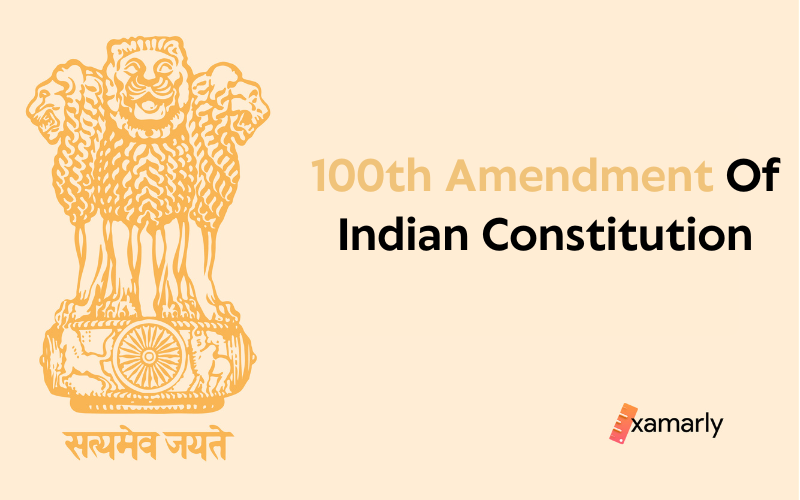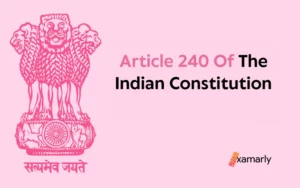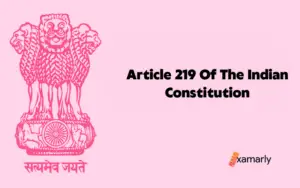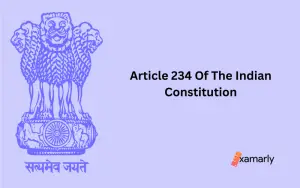The transfer of some regions between India and Bangladesh took effect on May 28, 2015, after the Lok Sabha approved the 100th Amendment of Indian Constitution. The transfer, which complied with both the 1974 Land Boundary Agreement and the 2011 Protocol, was accomplished by the exchange of enclaves and the retention of adverse possessions. Four states were impacted by the Indian Constitutional Amendments.
The Constitution (One-Hundredth Amendment) Act of 2015 is used to refer to this legislation. An Act further amending the Indian Constitution to give effect to Bangladesh’s transfer of some Indian territories to that country and India’s acquisition of others by the agreement and protocol signed by the governments of Bangladesh and India.
Background
A 4,096 km long land border between India and Bangladesh runs across West Bengal, Assam, Tripura, Meghalaya, and Mizoram. Among the international borders that India shares with its neighbors, this one is the longest. Between 50,000 and 100,000 people live in so-called Chitmahals, or Indo-Bangla enclaves, along this line.
There are 71 Bangladeshi enclaves in India and 102 Indian ones in Bangladesh. There are also 28 counter-enclaves and one counter-counter-enclave, both named Dahala Khagrabari, inside those enclaves. The citizens of these enclaves are living miserable lives as a result of this territorial confusion. Because of the sliver of foreign land separating them from their own country, they are unable to access fundamental government services. Ever since Bangladesh’s inception, this problem has been unresolved.
In 1972 Indira-Mujib Accord had the vision to address this issue for the first time. Consequently, in 1974 signing of the India-Bangladesh Land Boundary Agreement between the two nations.
Salient Features And Facts
- It will secure the long-stranded boundary and make it possible to stop illegal migration, smuggling, and criminal actions crossing the border.
- The newly delimited limits are fixed bounds, adding to the certainty regarding the future.
By providing their nationality from their respective countries, - It would assist in resolving the boundary disputes in Meghalaya, Tripura, Assam, and West Bengal, among other places.
- As part of India’s north-eastern policy, it would help to improve connectivity with south-east Asia. All of these were feasible with Bangladesh’s active assistance.
- Tribal groups from the NE states occupy the majority of the concerned region; as a result, the exchange revokes their land rights, making them more vulnerable.
- This amendment helped the stateless citizens by giving them citizenship of their respective countries.
- This amendment has put an end to a problem that has persisted for decades.
- It would facilitate access to the northeastern state, which is undeveloped, and would advance regional development efforts.
Date Enacted
In the sixty-sixth year of the Republic of India on the 28th of May 2015, the 100th Amendment came into existence.
Prominent People Involved
There have been several prominent people who have participated in the development and implementation of this constitutional amendment in India. Some of them are advocates, others are experts in the field or both. This historic agreement, the 2011 Protocol signed by Sheikh Hasina of Bangladesh and Manmohan Singh of India, agreed to maintain the status quo regarding the problem of adverse occupations of land.
Important Provisions In 100th Amendment Of Indian Constitution
The 100th Amendment of the Indian Constitution provides for changes in various provisions of the Indian Constitution.THE FIRST Schedule
[See sections 3 and 2(a), 2(b)]PART I
The territory was obtained by Article 2 of the contract, dated May 16, 1974, and Article 3 (I) (b) (ii) (iii) (iv) (v) of the protocol, dated September 6, 2011.
PART II
The territory was acquired under Article 2 of the Agreement dated May 16, 1974, and Article 3(I)(c)(i) of the Protocol dated September 6, 2011, respectively.
PART III
The land was acquired by Articles 1(12) and 2 of the contract dated May 16, 1974, and Articles 2 (II), 3 (I) (a), (iii), (iv), (v), and VI of the protocol dated September 6, 2011.
THE SECOND Schedule
[See sections 3 and 2(b), 2(d)]PART I
The territory was transferred by Article 2 of the agreement of May 16, 1974, and Article 3 (I) (d) I (ii) of the protocol dated September 6, 2011, respectively.
PART II
The land was transferred under Article 2 of the Agreement dated May 16, 1974, and Article 3(I)(b)(i) of the Protocol dated September 6, 2011, respectively.
PART III
The territory that was transferred by Articles 1(12) and 2 of the agreement dated May 16, 1974, and Articles 2 (II), 3 (I) (a), I (ii), and (vi) of the protocol of September 6, 2011.
Ratification
The 1974 India-Bangladesh Agreement was never ratified since it involved a transfer of territory and a constitutional amendment was needed. Thus, the amendment was put into effect. Due to the exchange of lands, this agreement required ratification by the parliaments of both nations. While Bangladesh just recognized it in 1974, the Indian parliament has not done so as of yet.
Summing Up
100th Amendment was amended to transfer some Indian territories to Bangladesh and the acquisition of others by India in conformity with the agreement and protocol signed by the governments of Bangladesh and India.
Previous Post – 99th Amendment Of Indian Constitution
Up Next – 101st Amendment Of Indian Constitution
FAQ’s
Who was the president during the 100th amendment?
On May 28, President Pranab Mukherjee approved the Constitution (100th Amendment) Bill, 2015, ratifying a 1974 agreement on the transfer of territory and the demarcation of a portion of the India-Bangladesh border.
Why was the 100th amendment added to the Constitution?
According to the 100th amendment to the Indian Constitution, Bangladesh will receive some lands that India will acquire. The land boundary pact between India and Bangladesh was ratified by the Constitution Act of 2015 (100th amendment).






